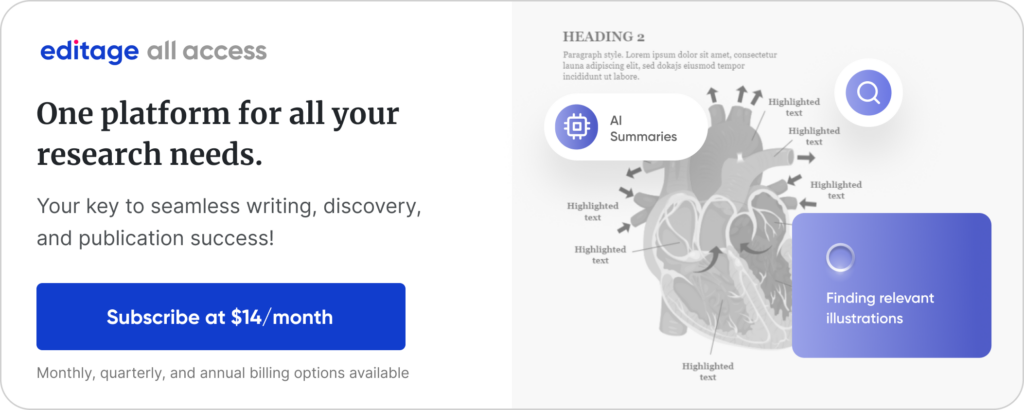Table of Contents
A research design is a strategy or an outline of how a research study is proposed to be conducted to address a specific research question and also includes the data collection and analysis methods. A good research design helps provide direction to the research and ensures that it is proceeding on track according to the researcher’s plan. A well-structured research design can be considered a blueprint of the entire research, depicting the use of appropriate methods to achieve the research objectives and obtain valid and accurate results.
A well-designed research study is beneficial in advancing science because it provides sufficient information and accurate results, enabling other researchers to conduct further studies using this study’s findings and validate the results. A research study with a poorly designed structure, on the other hand, may produce inaccurate and unreliable results, which cannot be used by other researchers and eventually hamper scientific progress.
This article discusses the key elements of a robust research design and explains the benefits of various research design types, accompanied by relevant examples.
What is Research Design?
A research design is a type of framework developed in the planning stages to help guide the research in a suitable direction, including determining the research questions, selecting appropriate research methods, and identifying suitable data collection and analysis methods.[1] A well-structured plan helps generate valid, reliable, and accurate results.
A good research design typically has the following elements [2]
- Clear objective: The research question must be stated in clear terms.
- Sampling: The size, methods, and inclusion and exclusion criteria should be clearly specified.
- Data collection and analysis: These methods should be suitable for the type of research methodology chosen for your study.
- Research methodology: The overall approach of your research should be described for readers.
- Study duration: To better understand the research context, the study duration should be specified, along with the time required for data collection and analysis.
- Ethical considerations: Important ethical information, such as informed consent and confidentiality, should be included to ensure research integrity.
Purpose of Research Design
The primary purpose of a research design is to create a study plan that helps assess the cause-and-effect relationships between variables. Research designs have several purposes as listed below.3
- To create a roadmap for the study, which researchers can refer to for tracking their progress.
- Ensure alignment between research objectives and results.
- Minimize errors in data collection and analysis by providing guidelines.
- Help other researchers replicate the findings.
- Ensure the validity and accuracy of the results and lend credibility to the study.
Key Components of Research Design
A research design has several important components, and it is essential to include these to develop a well-structured and complete design.
- Research question and objectives: Help guide the research process
- Variables: The concepts whose relationships need to be studied
- Sampling techniques: Suitable samples of appropriate sizes should be used depending on the study type.
- Data collection methods: Should be selected based on the study, and can include surveys, interviews, observations, or experiments.
- Data analysis methods: These methods should be based on the type of data collected.
Types of Research Design
Research designs can be broadly categorized into two types: quantitative and qualitative.
Quantitative Research Design
Quantitative research is the process of collecting and analyzing numerical data to describe, predict, and control the variables of interest.4 The results are expressed in numbers and graphs and help in testing the causal relationships between variables, making predictions, and generalizing results. This research design category is used for testing a theory and then approving or rejecting it based on the results.
The following table describes the different types of quantitative research designs.[2]
| Quantitative research design type | Description | Examples |
| Descriptive | Used to describe a research topic and identify characteristics, trends, and categories. Helps understand the “what,” “where,” “when,” and “how” of the research topic but not the “why” | Study on the income levels of people who use nutritional supplements |
| Correlational | Used to identify relationships (strength and direction) between variables | Study on the correlation between amount of sleep people get and their happiness levels |
| Experimental | Uses the scientific method of studying interactions between variables and developing and testing hypotheses | Determining the efficacy of a new vaccine plan for influenza |
| Explanatory | Used to explore an event when only limited information is available. Researchers use their own ideas and thoughts to explore topics | Formulating hypotheses to guide future studies on delaying school start times for better mental health among teenagers |
| Diagnostic | Identifies the underlying factors that cause events to occur and helps find solutions | A researcher analyzing customer reviews to identify areas where a product can be improved |
Qualitative Research Design
Qualitative research is the process of collecting, analyzing, and interpreting non-numerical data.5 This method uses reasoning and focuses on the validity rather than the reliability of the results. The observations of this research are expressed in words and help in understanding individuals’ subjective perception about an event, condition, or subject. This type of research is exploratory and is used to generate hypotheses or theories based on the data.
The following table lists the various types of qualitative research designs, along with their definitions and corresponding research design examples.[2]
| Qualitative research design type | Description | Example |
| Phenomenological | Subjective understanding of people’s experiences | A study of nurses’ experiences in caring for patients with COVID-19 |
| Ethnographic | Understanding a phenomenon’s social context through interviews and note-taking | Studying online gaming communities to understand the social structures, communication patterns, and shared norms among players |
| Case study | Detailed examinations of people or groups of people to understand the cause-and-effect relationships between variables | A case study investigating the reasons for differences in recruitment rates of minority ethnic people in asthma research |
| Grounded theory | Systematic review of existing data to develop theories. In this type, the research questions being studied have not been previously studied in depth. | To study how people adopt a certain product, the researcher collects data through interviews and then analyzes the data to look for patterns. These patterns are used to develop a theory about how people adopt that product. |
Quantitative Research vs Qualitative Research
Here are some of the key differences between quantitative and qualitative research. [6]
| Parameter | Qualitative research | Quantitative research |
| Purpose and design | Explore ideas, formulate hypotheses; more subjective | Test theories and hypotheses, discover causal relationships; measurable and more structured |
| Data collection method | Semi-structured interviews/surveys with open-ended questions, document study/literature reviews, focus groups, case study research, ethnography | Experiments, controlled observations, questionnaires and surveys with a rating scale or closed-ended questions. The methods can be experimental, quasi-experimental, descriptive, or correlational. |
| Data analysis | Content analysis (determine presence of certain words/concepts in texts), grounded theory (hypothesis creation by data collection and analysis), thematic analysis (identify important themes/patterns in data and use these to address an issue) | Statistical analysis using applications such as Excel, SPSS, R |
| Sample size | Small | Large |
| Example | A company organizing focus groups or one-to-one interviews to understand customers’ (subjective) opinions about a specific product, based on which the company can modify their marketing strategy | Customer satisfaction surveys sent out by companies. Customers are asked to rate their experience on a rating scale of 1 to 5 |
Characteristics of Research Design
For ensuring academic integrity and authenticity, all research designs should have the following characteristics: [2,3]
- Neutrality: The research should present an unbiased perspective, free of any preconceived notions. Researchers’ expectations should not affect the reporting of the findings.
- Reliability: The research should produce consistent results over repeated measures and there should be few errors due to chance.
- Validity: Refers to the minimization of nonrandom errors.
- Generalizability: The research results should be applicable to a larger population and not just the study sample.
How to Choose the Right Research Design
Here are a few factors to consider when selecting the right research design.7
- Research question: The type of research question and study objectives determines the type of research design most appropriate for your research. For instance, if you’re studying consumers’ purchasing behaviors, a qualitative design would be suitable. However, if you’re testing hypotheses, you may need numerical data and therefore a quantitative design would be more appropriate.
- Data availability: The presence of a large, representative sample of data can be helpful in a quantitative design, and a smaller sample may be more appropriate for a qualitative design.
- Resources and time availability: The amount of resources and time available will determine the type of research design required. Experimental designs, for instance, can be time- and resource-intensive, so if you’re short on either time or resources, then this design type won’t be suitable.
Benefits of Research Design
An effective research design can be beneficial to researchers in several ways. Listed below are a few key benefits of research design.[1]
- Ensures that the research question and objectives are clearly defined.
- Helps researchers identify potential limitations.
- Helps identify suitable data collection methods and eventually saves time and resources.
- Makes it easier for other researchers to repeat the research and validate the findings.
- Improves the credibility of the research.
Frequently Asked Questions
References
- Importance of research design—A quick overview. SciSpace. Published December 18, 2023. Accessed April 12, 2025. https://scispace.com/resources/importance-of-research-design/ \
- What is research design? Understand types of research design, with examples. Researcher.Life. Published March 14, 2023. Accessed April 15, 2025. https://researcher.life/blog/article/what-is-research-design-types-examples/#Characteristics_of_research_design
- Research design: What it is (plus 20 types). Indeed. Published January 28, 2025. Accessed April 13, 2025. https://www.indeed.com/career-advice/career-development/research-design
- What is quantitative research? Definition, methods, types, and examples. Published March 23, 2023. Accessed April 12, 2025. https://researcher.life/blog/article/what-is-quantitative-research-types-and-examples/
- 8 Types of qualitative research (with uses and benefits). Indeed. Published March 3, 2025. Accessed April 12, 2025. https://www.indeed.com/career-advice/career-development/types-of-qualitative-research
- Qualitative vs quantitative research. Methods & data analysis. SimplyPsychology. Published December 18, 2023. Accessed April 12, 2025. https://www.simplypsychology.org/qualitative-quantitative.html
- The power of research designs: Choosing the right design for your study. Techspert. Published February 17, 2023. Accessed April 13, 2025. https://techspert.com/blog/the-power-of-research-designs-choosing-the-right-design#:~:text=If%20you%20have%20access%20to,insights%20and%20inform%20important%20decisions
Paperpal is a comprehensive AI writing toolkit that helps students and researchers achieve 2x the writing in half the time. It leverages 22+ years of STM experience and insights from millions of research articles to provide in-depth academic writing, language editing, and submission readiness support to help you write better, faster.
Get accurate academic translations, rewriting support, grammar checks, vocabulary suggestions, and generative AI assistance that delivers human precision at machine speed. Try for free or upgrade to Paperpal Prime starting at US$25 a month to access premium features, including consistency, plagiarism, and 30+ submission readiness checks to help you succeed.
Experience the future of academic writing – Sign up to Paperpal and start writing for free!






